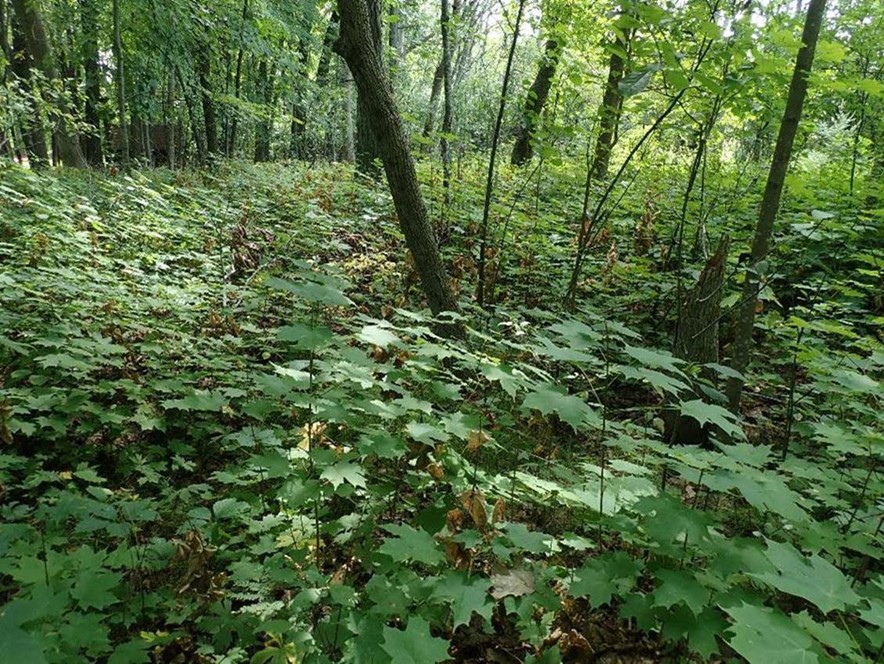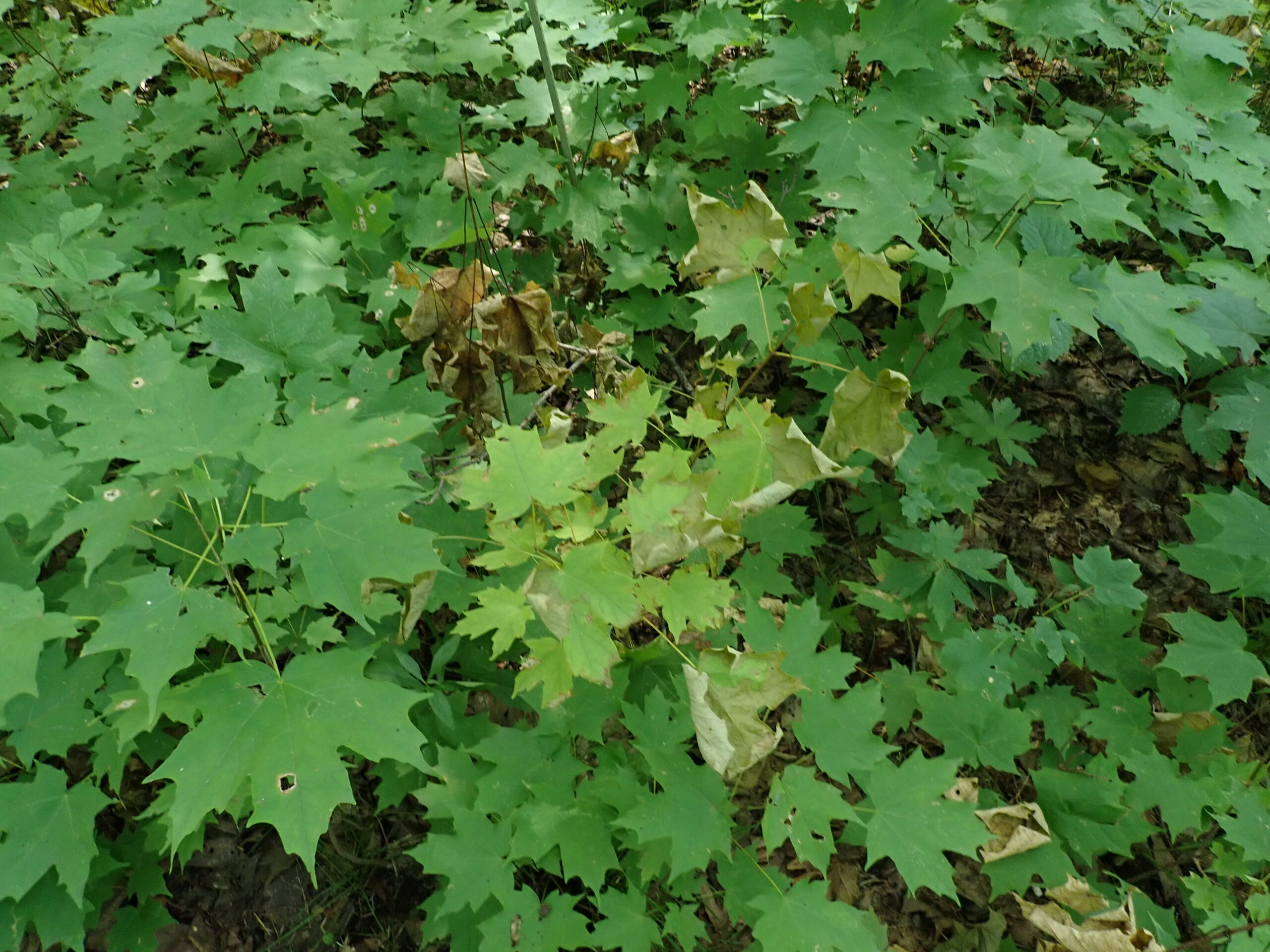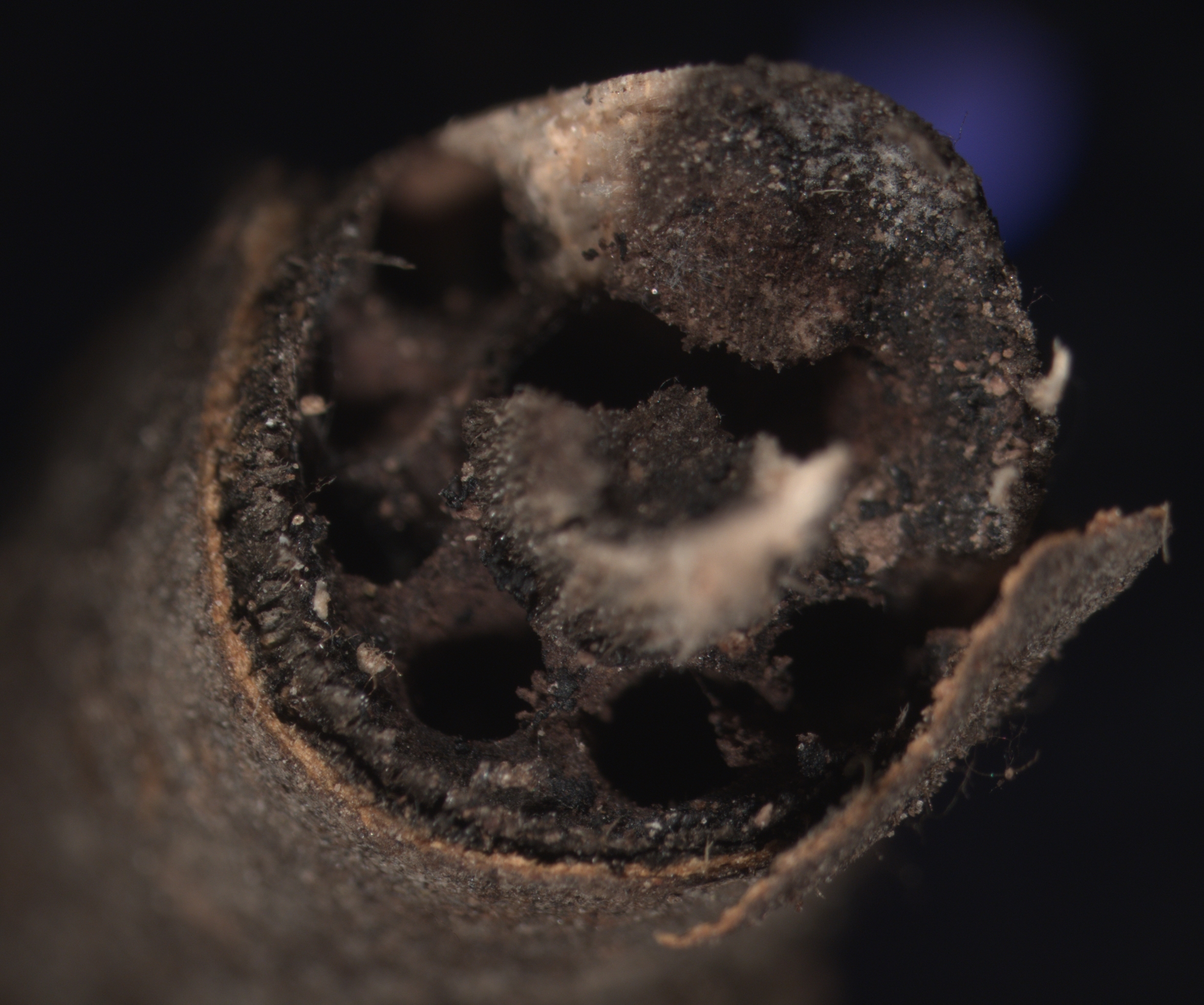By Kyoko Scanlon, DNR Forest Pathologist, Fitchburg, kyoko.scanlon@wisconsin.gov
This summer, the Forest Health Lab received sugar maple seedlings with brownish yellow leaves, which were sent by a Waukesha County landowner who observed many understory sugar maple seedlings and saplings quickly turning brown throughout the summer. This mortality continued until the end of September. The landowner wanted to know why these plants were dead and dying.
All samples that the lab received appeared to have broken about one inch below the soil line and were missing roots. Upon close examination under a microscope, forest health staff found tiny beetles in small hollow columns near where the stems broke off. Mike Hillstrom, South Central Zone Forest Health Specialist, identified the beetles as Anisandrus sayi, a species of ambrosia beetle.

Anisandrus sayi adult beetles are found in the wood of affected seedlings. Photo: Copyright © 2013 Marc DiGirolomo
In early October, DNR forest health staff visited the site. It was a small woodlot with a sugar maple, red oak, black cherry, shagbark hickory, ironwood, basswood and elm overstory and a carpet of sugar maple regeneration of natural origin. All healthy, symptomatic and dead sugar maple seedlings and saplings were counted within six one-meter radius plots.

On average, 15% of the understory sugar maple was dead or dying in the Waukesha County stand. Photo: Wisconsin DNR
On average, 15% (range 5-27%) of the understory sugar maple were dead or dying, and all the symptomatic sugar maple had multiple boring galleries at the root collar area. Due to the damage at the root collar area, affected plants were easily pulled out of the ground. Besides sugar maple, staff found several dogwood seedlings exhibiting similar symptoms. The stand had high deer pressure as well, and understory seedlings were suffering from constant deer browsing.
According to the Guide to insect borers in North American broadleaf trees and shrubs (USDA Forest Service Agriculture Handbook AH-706), A. sayi has been recorded from Ontario, Quebec and Maine southward to northern Georgia and westward to Missouri, Illinois and Michigan. It attacks many hardwood species but favors maples, especially red and sugar maples. The book notes that the beetles attack weakened and windthrown trees and fresh-cut logs but prefers twigs and small-diameter stems and branches.
A. sayi is commonly collected in insect traps in low numbers each year in Wisconsin and is considered a secondary invader. Though this was the first time that the Forest Health Team received a report of this type of damage on sugar maple regeneration associated with an ambrosia beetle in the forest setting, the Wisconsin Department of Agriculture, Trade and Consumer Protection (DATCP) recently recorded at least two cases in 2017 of damage caused by several ambrosia beetles, including A. sayi in nurseries.
In one case, up to 20% of outplanted honey locust died in a nursery in Ozaukee County. The following year, multiple species of ambrosia beetles were caught in traps, but no additional mortality was observed. In the other case, Ohio buckeye plants three inches in diameter growing in 5-gallon containers were found infested with A. sayi and another ambrosia beetle in a nursery in Sheboygan County. In both cases, affected plants were under stressful growing conditions.
At this point, the damage on sugar maple regeneration associated with A. sayi appears to be localized, as the lab has not received any other reports. Forest health staff plan to revisit the site next summer to assess the damage. If the site does not sustain any further damage by the beetles, it should have plenty of sugar maple seedlings for regeneration, though deer browsing may continue to be an issue.
If you’ve seen similar damage in your woods, please contact your local Forest Health Specialist.


